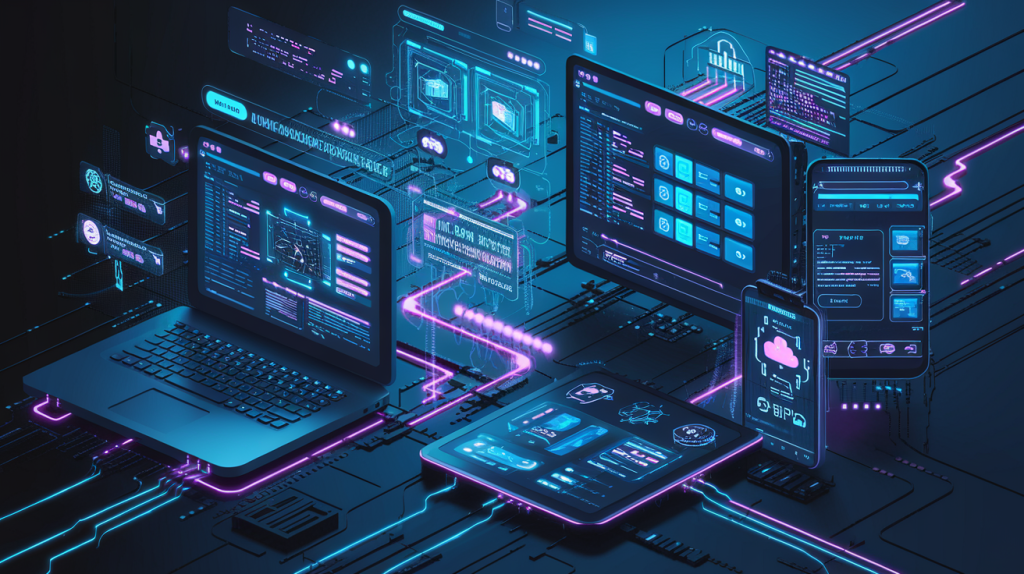Integrating AV with IoT: Creating Seamless, Connected Environments
Integrating AV with IoT: Creating Seamless, Connected Environments

Imagine walking into your home, and with a single voice command, the lights dim to the perfect ambiance, your favorite playlist starts, and the thermostat adjusts to your ideal comfort level. Now, extend this vision to workplaces, classrooms, and public spaces, where audio visual (AV) technology and the Internet of Things (IoT) combine to deliver a seamlessly connected environment. Welcome to the future of integration, where the lines between the physical and digital worlds blur to create intelligent, immersive spaces.
The Perfect Union: AV and IoT
AV and IoT integration isn’t just a technological trend—it’s a paradigm shift. Audio visual technology, known for delivering sound and visual experiences, gains a new dimension when paired with IoT’s interconnected network of devices. Together, they create environments that respond intuitively to human needs.
IoT devices collect and exchange data in real-time, while AV systems use this data to provide immersive and customized user experiences. For example, a conference room outfitted with IoT sensors and AV systems can automatically adjust lighting, sound levels, and screen sharing based on the number of people present and the type of meeting being held.
Applications Across Industries
- Smart Homes
In residential settings, AV and IoT integration have revolutionized how we interact with our living spaces. Smart TVs, voice assistants, connected speakers, and home automation hubs like Google Nest or Amazon Alexa now work together to enhance convenience.
Imagine using your smartphone to control your home theater system or asking your voice assistant to start a movie while dimming the lights automatically. The integration allows these devices to “talk” to one another, creating a cohesive entertainment and living experience.
- Corporate Spaces
Incorporating AV and IoT in workplaces boosts productivity and efficiency. Smart conference rooms with IoT sensors can monitor occupancy and adjust resources, such as lighting, air conditioning, and AV equipment, in real-time.
For instance, a meeting room equipped with IoT-integrated AV systems can automatically log participants into video calls, display relevant presentation materials, and ensure optimal audio quality. Employees no longer waste time fumbling with cables or troubleshooting connectivity issues.
- Education
Through AV and IoT integration, classrooms have transformed into interactive learning environments. Smartboards, connected projectors, and IoT-enabled attendance systems create a more engaging and personalized educational experience.
For example, a classroom equipped with IoT sensors can adjust the projector brightness based on natural light, while a smart sound system ensures every student hears the lesson clearly, regardless of their seating position.
- Healthcare
Hospitals and clinics are leveraging AV and IoT to improve patient care and operational efficiency. In operating rooms, IoT sensors monitor vital signs, while AV systems provide real-time video feeds for remote consultations or training.
Smart patient rooms use IoT to adjust lighting and temperature based on individual preferences. Integrated AV solutions also enable healthcare professionals to access patient records or conduct telemedicine sessions seamlessly.
Key Technologies Driving the Integration
- Voice Control and AI Assistants
Voice-enabled IoT devices, such as Amazon Alexa or Google Assistant, are at the forefront of AV integration. These AI-powered systems allow users to control AV setups effortlessly using natural language. - Cloud Connectivity
Cloud-based solutions play a pivotal role in ensuring AV and IoT devices remain connected and synchronized. Cloud platforms enable data storage, analytics, and remote control of devices from anywhere. - Sensors and Automation
IoT sensors collect real-time data such as temperature, occupancy, and lighting conditions, which AV systems use to optimize user experiences automatically. - Edge Computing
Edge computing ensures faster data processing by analyzing IoT device data locally rather than relying on distant servers. This reduces latency, enhancing the responsiveness of AV systems.
Benefits of AV and IoT Integration
- Enhanced User Experience
Seamless integration of AV and IoT creates environments that anticipate and respond to user needs, making interactions more intuitive and enjoyable.
- Increased Efficiency
Automating routine tasks, such as adjusting settings or scheduling maintenance, saves time and reduces manual effort.
- Scalability
IoT and AV systems can grow with your needs, allowing for easy addition of new devices or functionalities without overhauling existing setups.
- Energy Savings
IoT sensors enable energy-efficient environments by turning off unused devices or optimizing resource consumption.
Challenges and Considerations
- Compatibility Issues
Integrating devices from multiple manufacturers can pose challenges. Adopting standards like IoT protocols and APIs can help.
- Cybersecurity Risks
IoT devices are vulnerable to cyberattacks. Encryption, regular updates, and robust firewalls are essential to secure integrated environments.
- Costs
The initial investment in AV and IoT integration can be significant, though the long-term benefits often outweigh these costs.
- Complexity
Managing and maintaining interconnected systems require expertise. User-friendly interfaces and centralized control systems can mitigate this challenge.
The Future of Connected Environments
As technology evolves, the synergy between AV and IoT will only deepen. Innovations like 5G connectivity, artificial intelligence, and augmented reality will further enhance the capabilities of integrated environments.
Imagine smart cities where AV-enabled IoT systems guide traffic flow, optimize public transport schedules, or create immersive entertainment experiences. Or think of homes that learn your preferences and adapt to your lifestyle over time.
Conclusion
Integrating AV with IoT is more than a technological advancement—it’s a leap toward a smarter, more connected world. By merging immersive audio-visual experiences with the intelligence of IoT, businesses and individuals can create environments that are not only functional but also delightful to interact with.
Whether you’re looking to enhance a home, workplace, or public space, the potential of AV and IoT integration is limitless. The question is not whether to adopt this technology but how soon you can start reaping its benefits.
The future is here—seamless, intelligent, and undeniably connected. Are you ready to embrace it?


